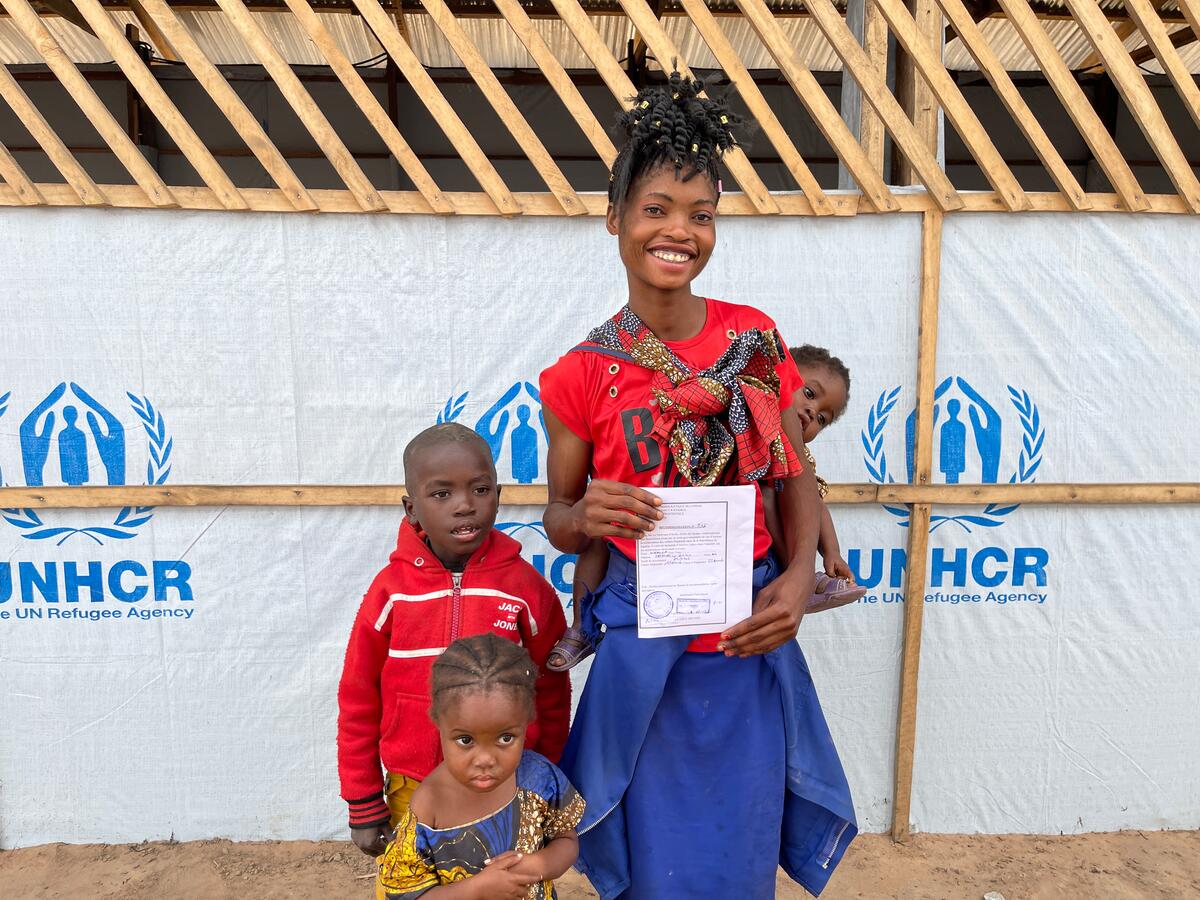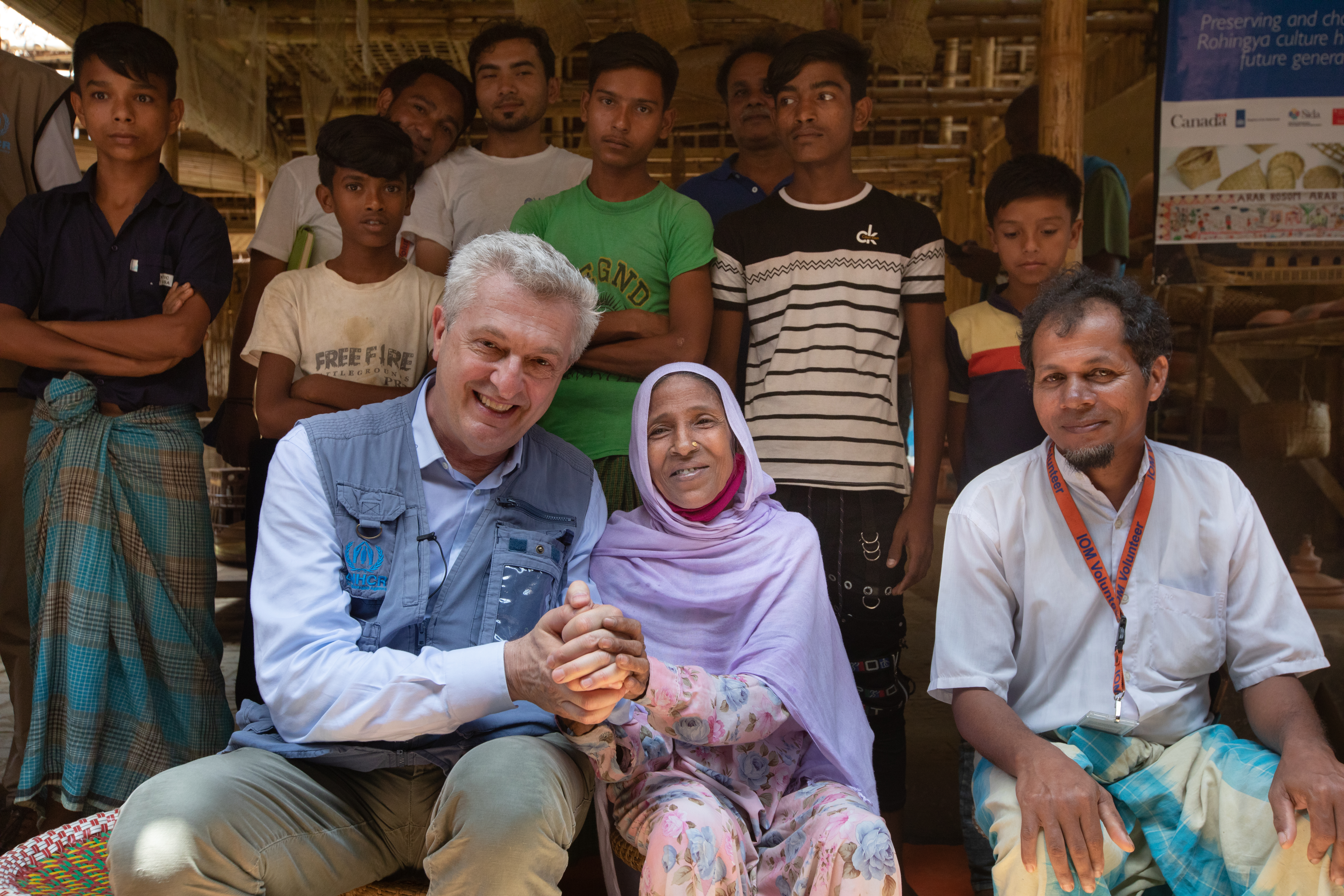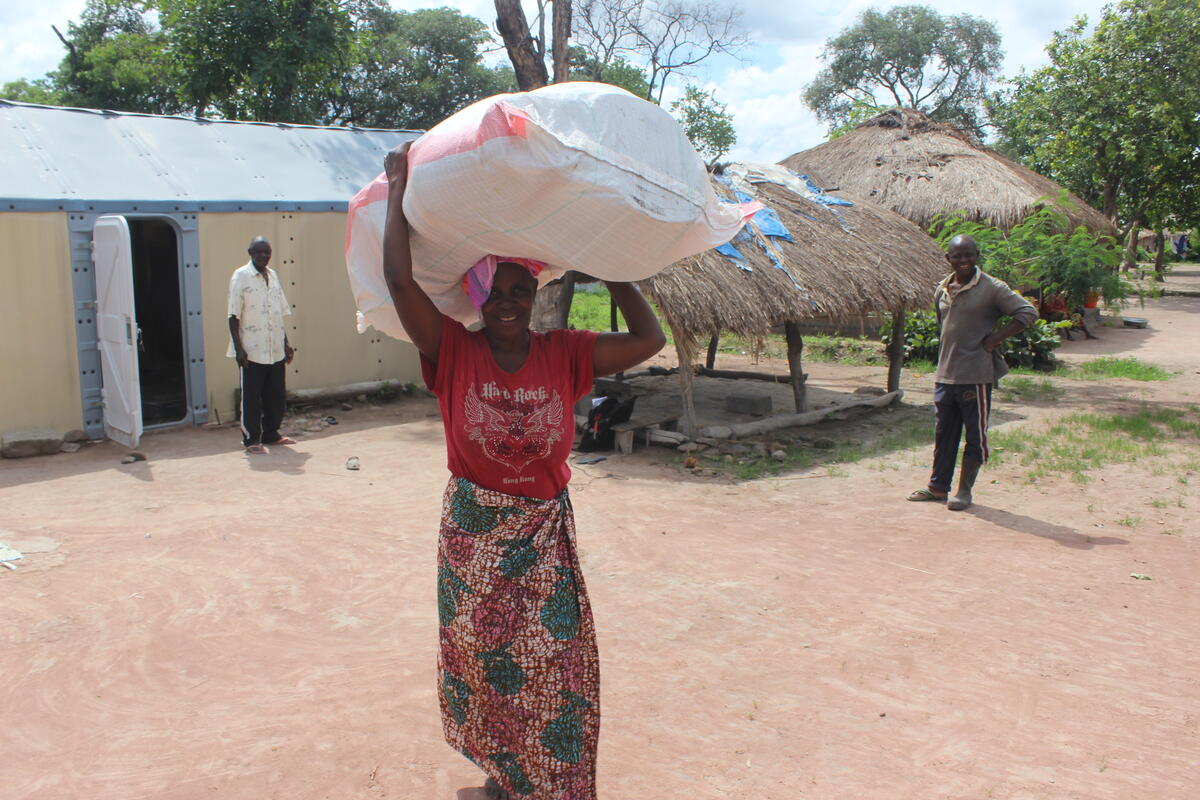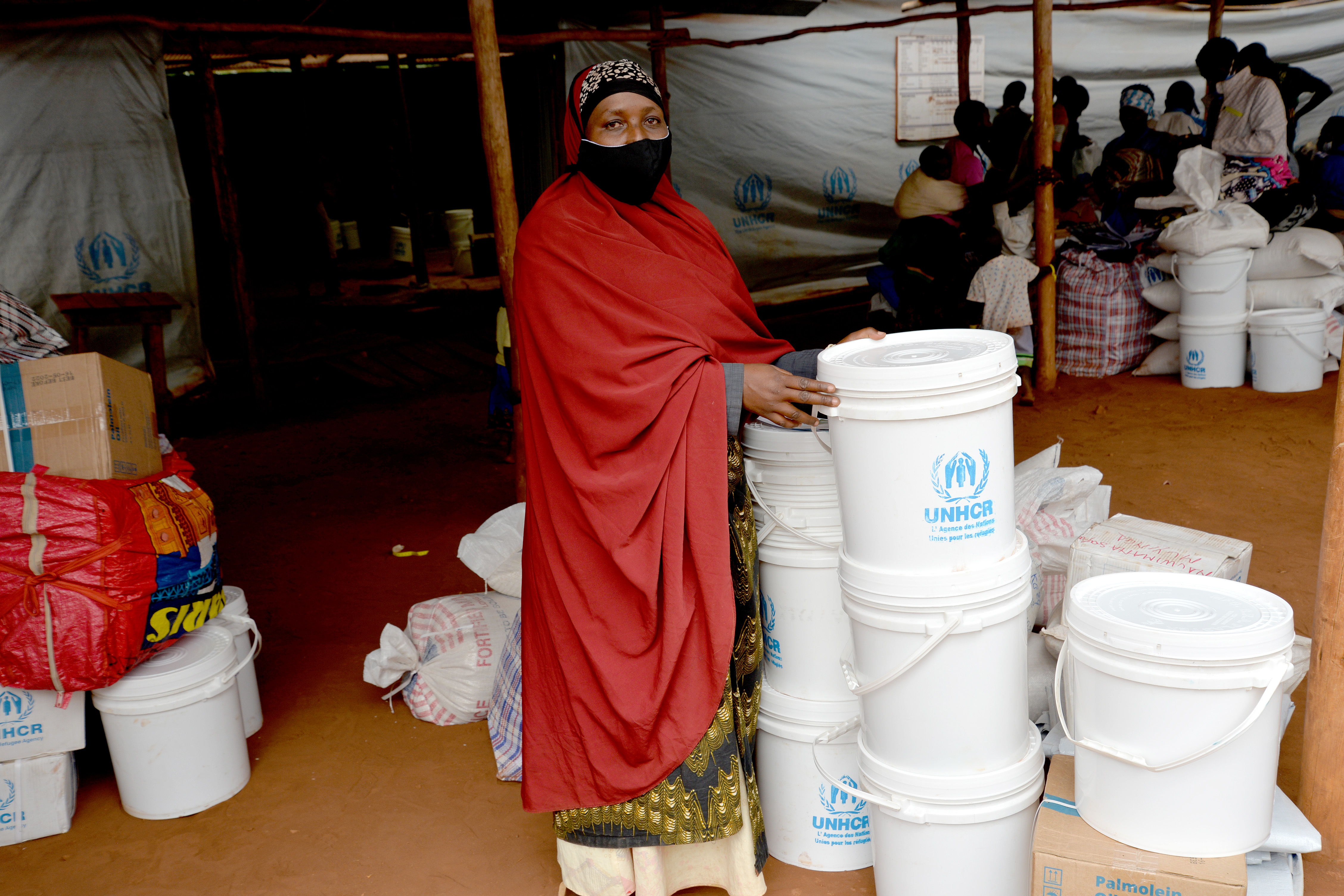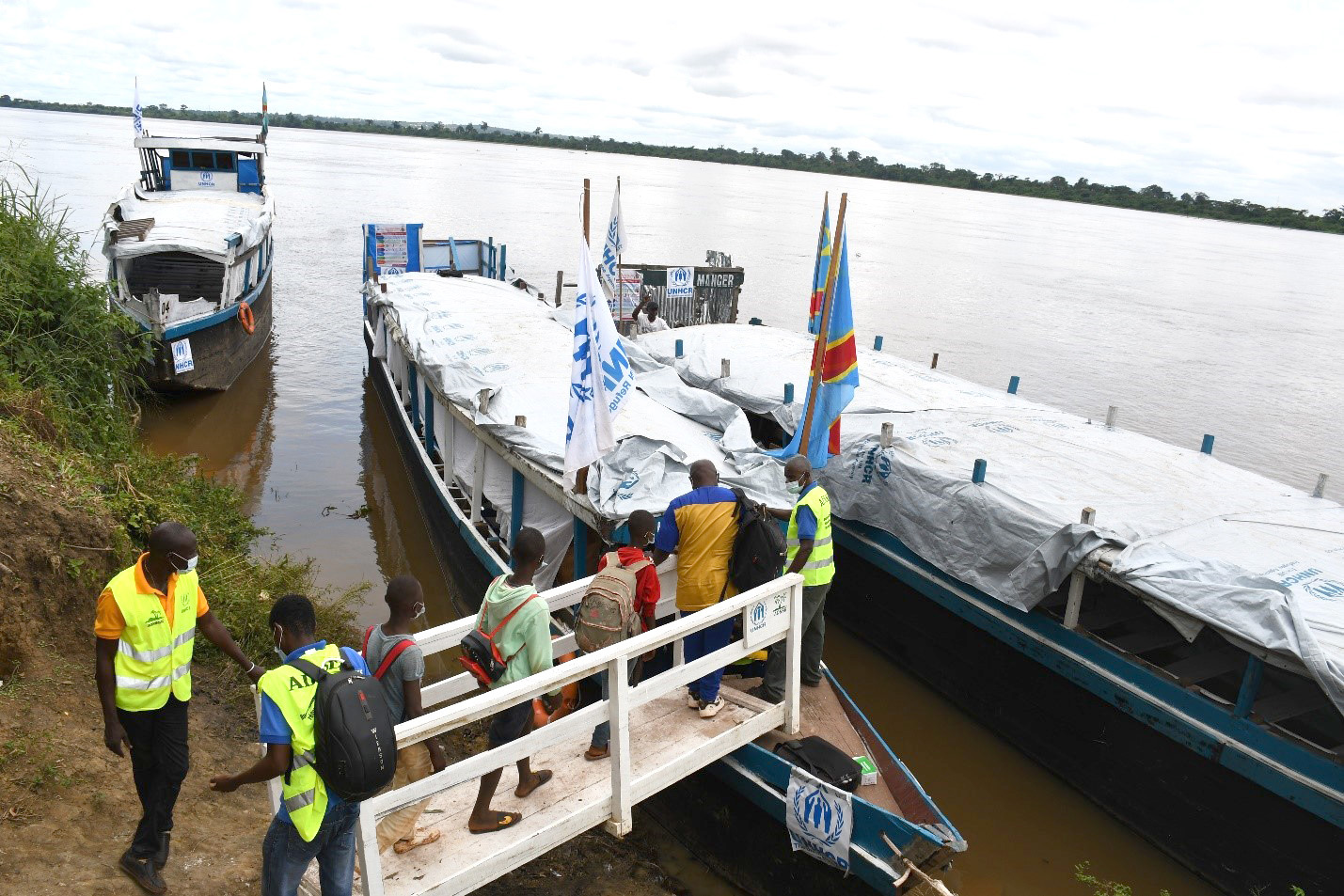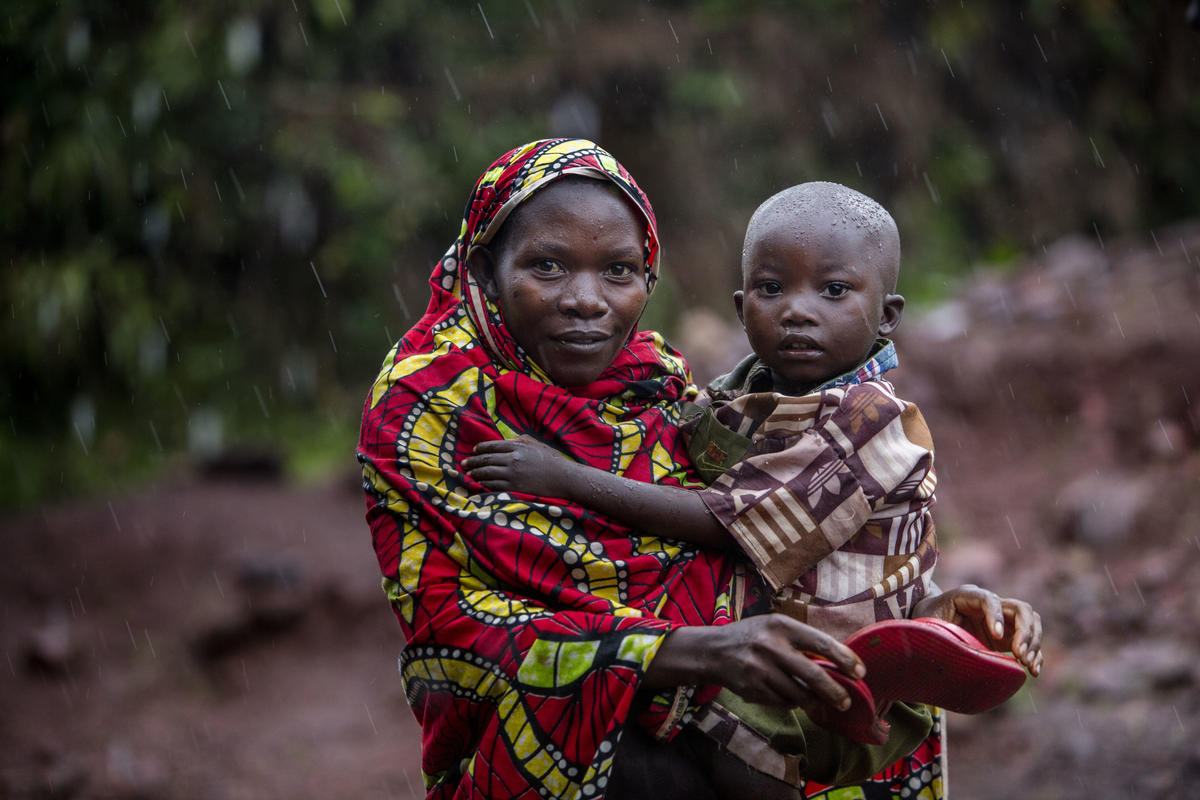Repatriation of 1972 Burundian Refugees hits 50,000 Mark
Repatriation of 1972 Burundian Refugees hits 50,000 Mark

KATUMBA, Tanzania, September 15 (UNHCR) - The repatriation of Burundian refugees from three special settlements in western Tanzania has passed the 50,000 mark. The milestone was reached on Sunday when 496 returnees crossed the border into Burundi, which many of them fled in 1972 to escape ethnic violence.
UNHCR and its local partners organized a small ceremony in the Katumba settlement to honour the 50,000th returnee: an 11-month-old baby girl called Happiness. Her parents, both farmers born and raised in the refugee settlement, were given a new bicycle to take with them to Burundi.
Her father, Fanuel Justin Kigomyi, was delighted with the unexpected gift. "I'll take care of the bicycle until my daughter can ride it to school. If life back in Burundi proves to be very tough, I will sell the bicycle to pay her school fees," he said, as traditional Burundian drums beat in the background.
For many of the so-called 1972 Burundian refugees, returning home after so long in Katumba or Tanzania's two other so-called "old settlements" is a major challenge. Many face problems reclaiming their land and UNHCR provides them with temporary shelter and supports the peaceful mediation of their disputes. As for landless returnees, the government and its UN partners help them settle in special rural integrated villages, six of which have been opened in 2008 and 2009.
Under a landmark programme launched by UNHCR and the Tanzanian government in March 2008, some 55,000 refugees from Katumba, Mishamo and Ulyankulu settlements decided to return to Burundi. With 50,000 now back home, the remaining 5,000 are expected to return to Burundi in the coming months. A further 162,000 opted under the programme for local integration and the chance of citizenship.
"Assisted voluntary return, organized by UNHCR in cooperation with the governments of Tanzania and Burundi, is part of an ambitious but realistic solutions strategy to end one of the world's most protracted refugee situations," said Yacoub El Hillo, UNHCR's representative in Tanzania.
Kuriye Kasagamba, a middle-aged Burundian, was among those at the Katumba ceremony waiting to go home. He clung possessively to a faded, battered suitcase, which his father purchased in Burundi 41 years ago. "A few years later, war erupted and my parents were forced to flee. This suitcase contained all they could take with them. As the first-born I inherited this case and today I'm finally able to take it back to Burundi, together with all my souvenirs and memories from Tanzania."
He, Happiness and the other returnees were later taken by train to the Lake Tanganyika port of Kigoma, where they boarded buses and trucks for the journey to the border. At Gitara transit centre inside Burundi, they underwent a medical check and were given an aid package to facilitate their reintegration, including cash, food and household items. UNHCR will take them with their belongings to villages and towns in Bururi, Makamba and Rutana provinces.
The 1972 refugees, who were self-sufficient in the old settlements, differ from those who fled from Burundi to Tanzania in the 1990s and were mainly hosted in refugee camps in the Kigoma and Kagera regions. With the return of relative peace, many have decided to return.
Since 2002, more than 430,000 of these camp refugees have returned to Burundi. A further 36,000 are in Mtabila, the only remaining camp for Burundian refugees in Tanzania.
By Edwin Seleli in Katumba and Eveline Wolfcarius in Dar Es Salaam, Tanzania


